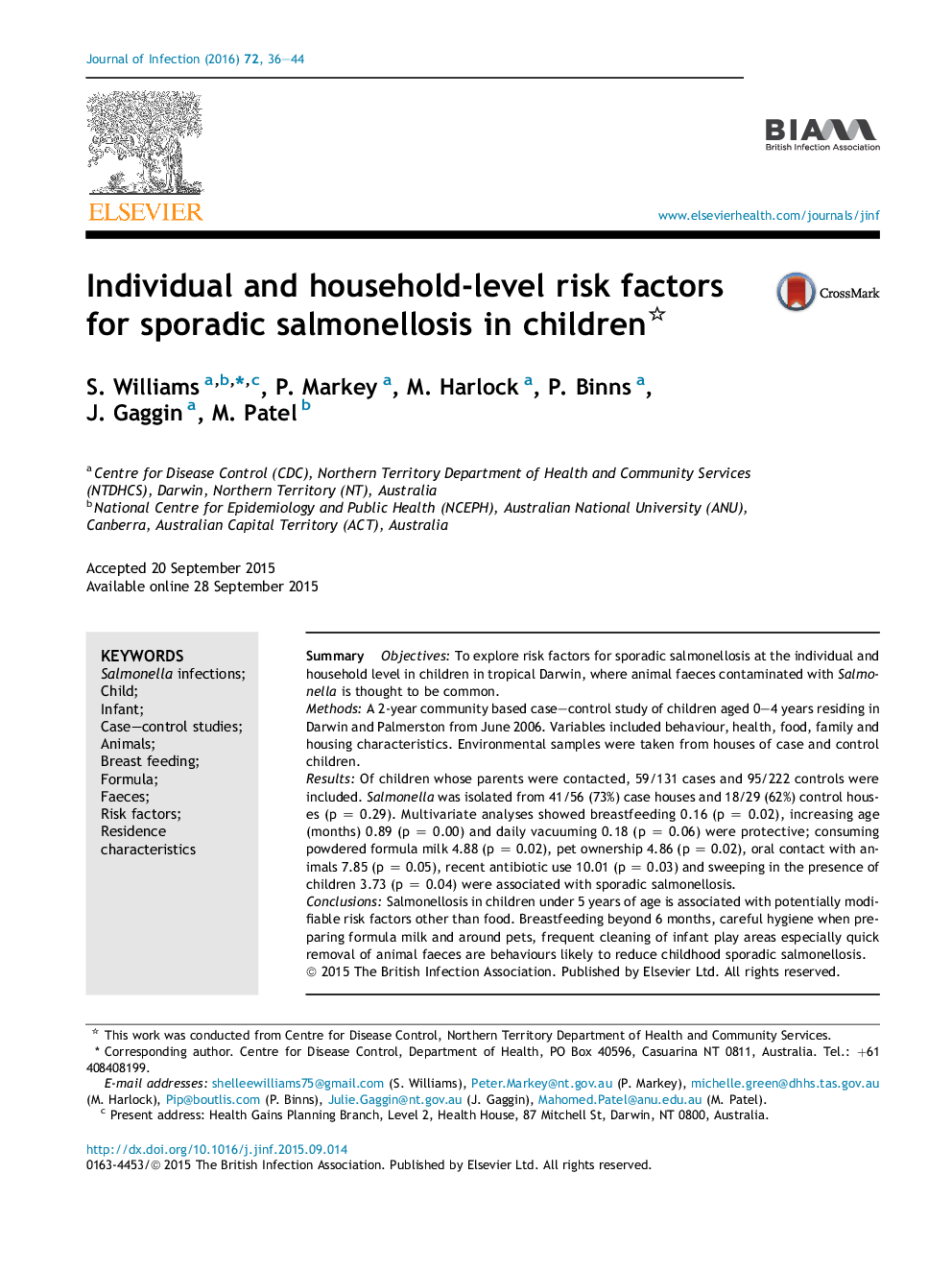| Article ID | Journal | Published Year | Pages | File Type |
|---|---|---|---|---|
| 3374377 | Journal of Infection | 2016 | 9 Pages |
•Behaviour is linked to disease where faeces containing Salmonella at home is common.•We identify modifiable risk factors for childhood salmonellosis in the home.•Breastfeeding beyond 6 months is protective for salmonellosis.•Quick removal of any animal faeces from child play areas is key in the tropics.
SummaryObjectivesTo explore risk factors for sporadic salmonellosis at the individual and household level in children in tropical Darwin, where animal faeces contaminated with Salmonella is thought to be common.MethodsA 2-year community based case–control study of children aged 0–4 years residing in Darwin and Palmerston from June 2006. Variables included behaviour, health, food, family and housing characteristics. Environmental samples were taken from houses of case and control children.ResultsOf children whose parents were contacted, 59/131 cases and 95/222 controls were included. Salmonella was isolated from 41/56 (73%) case houses and 18/29 (62%) control houses (p = 0.29). Multivariate analyses showed breastfeeding 0.16 (p = 0.02), increasing age (months) 0.89 (p = 0.00) and daily vacuuming 0.18 (p = 0.06) were protective; consuming powdered formula milk 4.88 (p = 0.02), pet ownership 4.86 (p = 0.02), oral contact with animals 7.85 (p = 0.05), recent antibiotic use 10.01 (p = 0.03) and sweeping in the presence of children 3.73 (p = 0.04) were associated with sporadic salmonellosis.ConclusionsSalmonellosis in children under 5 years of age is associated with potentially modifiable risk factors other than food. Breastfeeding beyond 6 months, careful hygiene when preparing formula milk and around pets, frequent cleaning of infant play areas especially quick removal of animal faeces are behaviours likely to reduce childhood sporadic salmonellosis.
